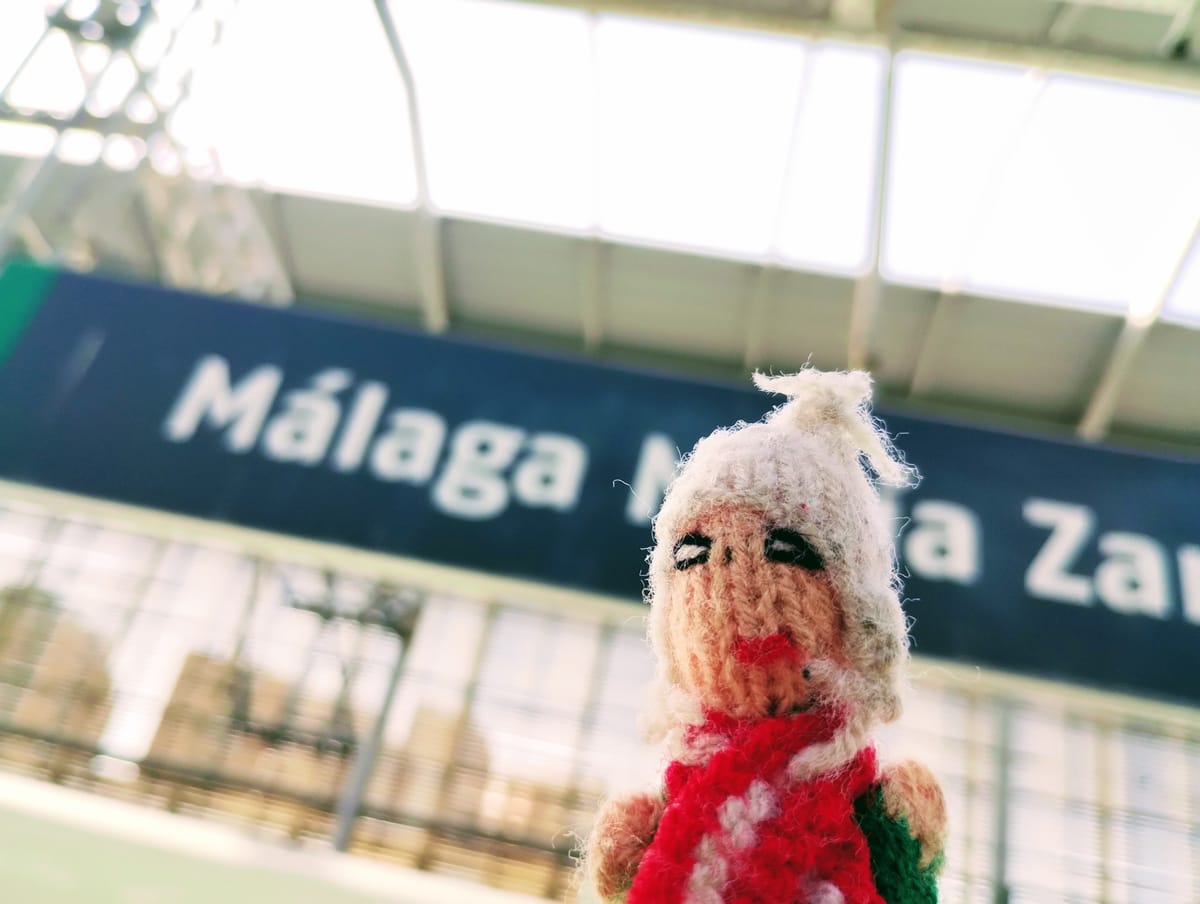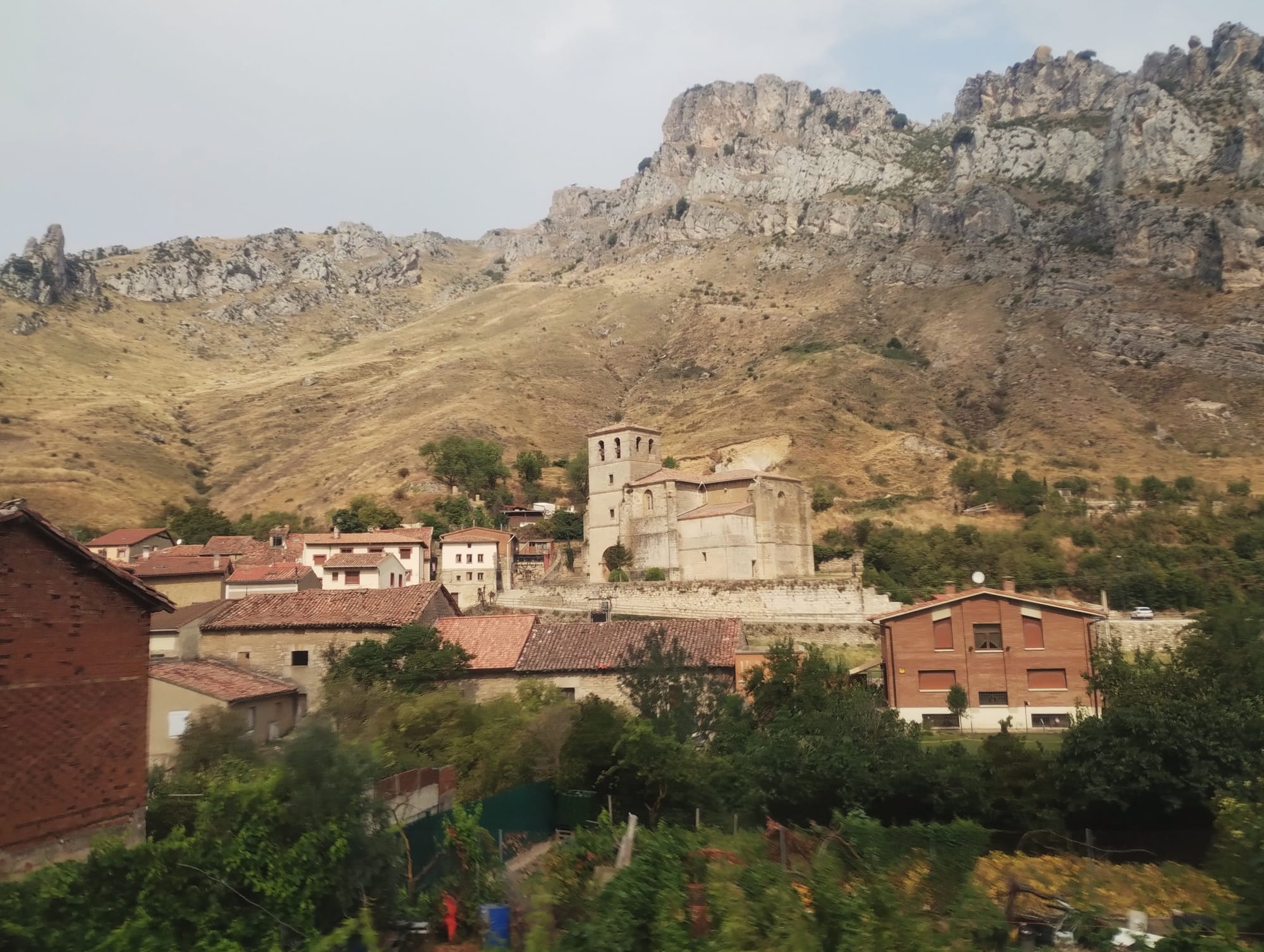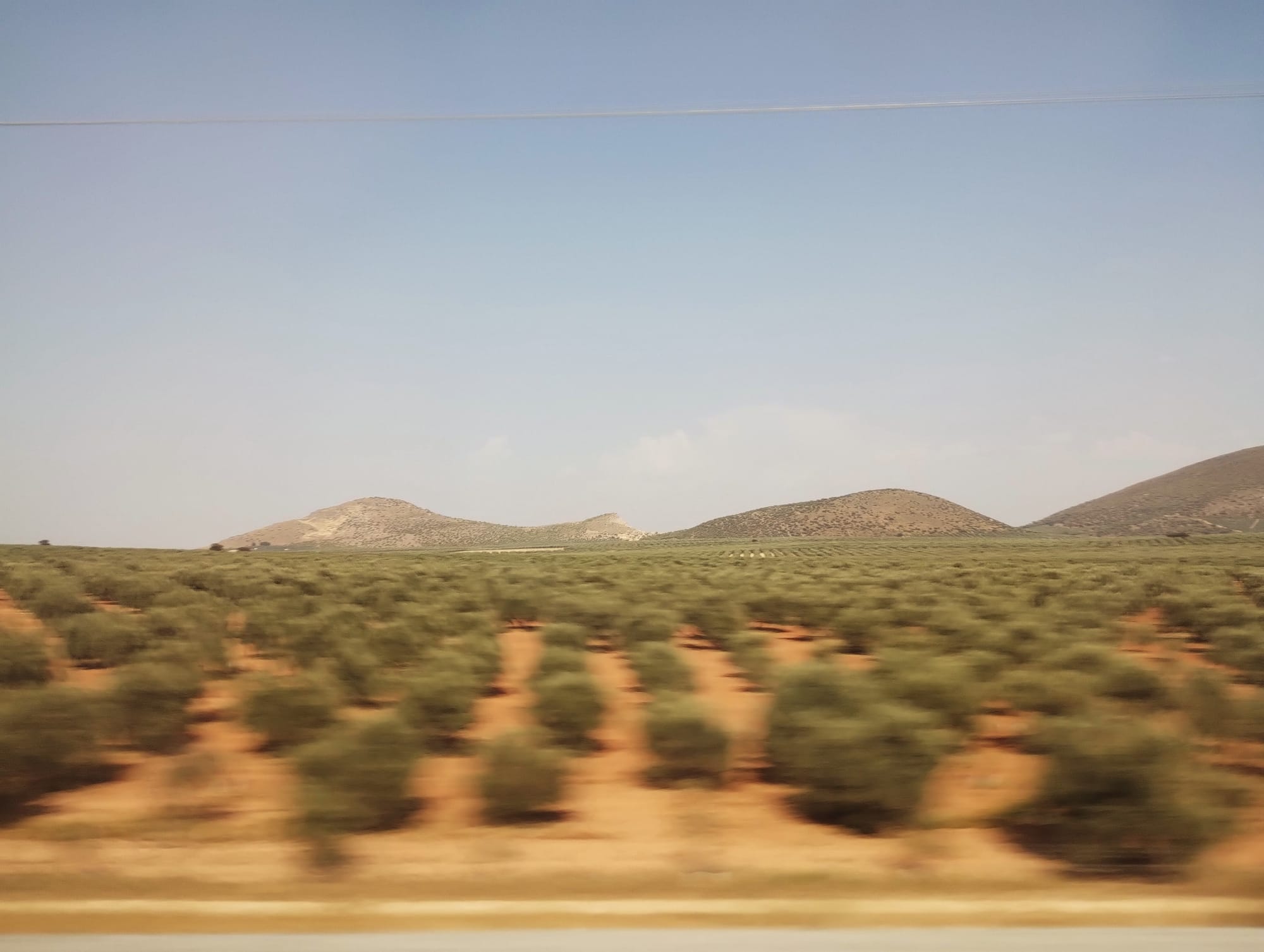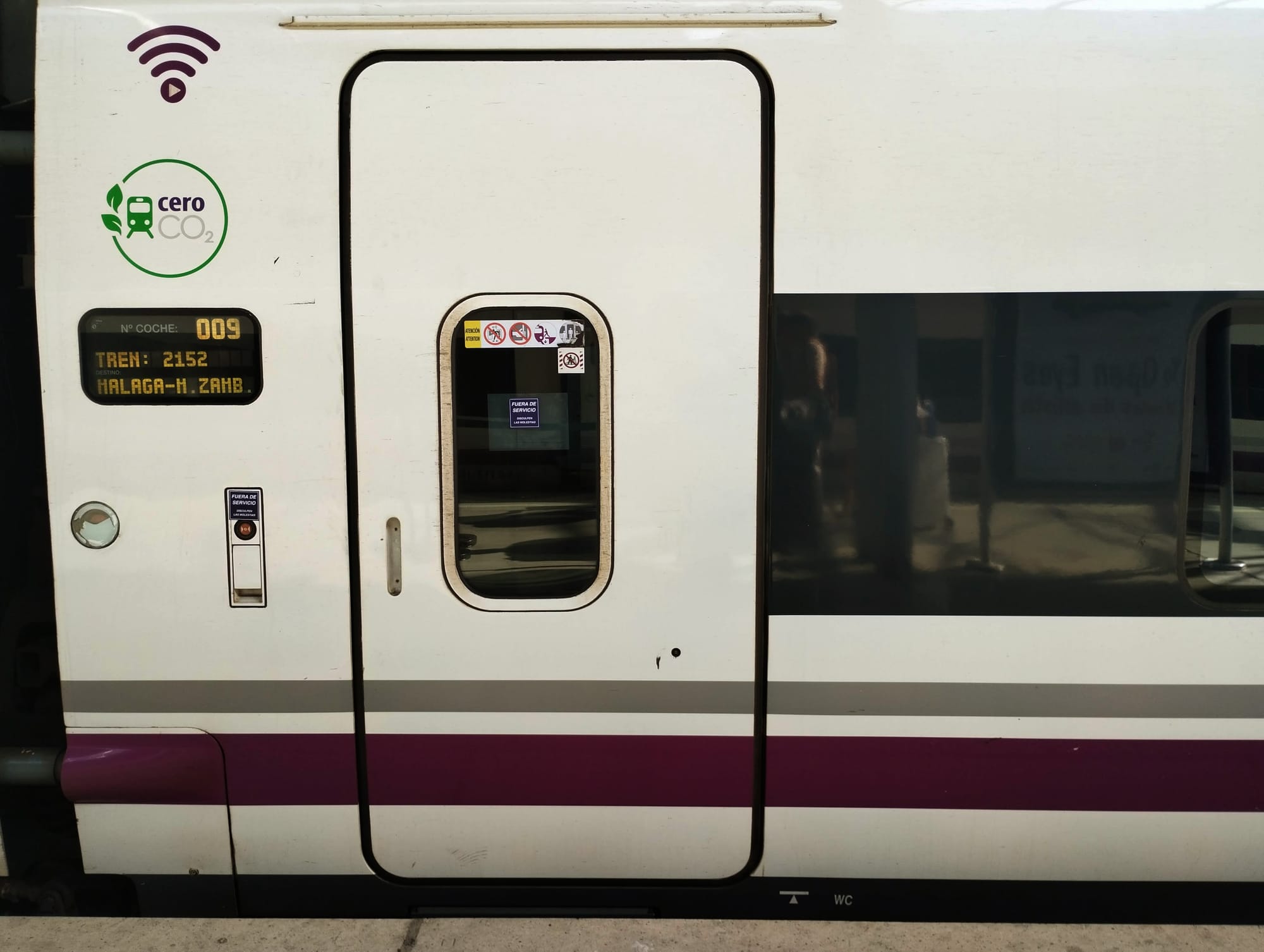Iberian Commute, day two: Donostia - Málaga
Fans, Fireworks, and Ferals

My hostel was functional. I'd have preferred a lovely little pine pod or something a bit more private with a door and/or dignity, but Donostia was full. Of course it was, because the city's most crowded, firework-laced fiesta had led to a dearth of sleepy pods.
I got a relatively good night's sleep despite the noise of the massive fan running flat out in the room, but pragmatically-speaking, I suspect my night would have been significantly less comfortable had it not been there. In my curtained bed, I had access to a mini fan which I pointed at my feet for the duration of the night and I wasn't too tired when I got up this morning at before-lunch o'clock (on a Sunday!) to find my way to the train station.
While the Downtown River hostel would not be my first choice next time, it is ideally suited for rolling out of bed and crossing the ornate bridge across the River Urumea to the station in three minutes, so you pays your money and you takes your choice. That said, the staff were lovely, and the nice man on check-in managed to stifle all outward signs of flinching pain as I indelicately but expertly butchered his language.
San Sebastián-Donostia station has come on since my last visit, but trains are conspicuous by their absence as there are currently no actual rails present while the line is upgraded to run high-speed to Irún, so coaches are filling in for now.
The coach station is conveniently located right next to the train station, guaranteeing connections between the two. I'm starting to think the Spanish value food for a travel experience more than the French as the cafeteria in the coach station was rather good. I considered a breakfast beer but decided against it and instead bought a croissant and a coffee for breakfast, which I consumed while waiting for the coach. It was not quite as good as my last Basque croissant experience, but certainly good enough to make me reconsider whether the French are just resting on their laurels these days.
My first steed of the day was a glamorous Renfe replacement bus service to Tolosa. Feeling rebellious, I sat on the back seat.

Tolosa looks, from a coach window, as if it merits a few days' exploration, and when we arrived our train was waiting for us on the platform. It took a while before we departed leaving time to look at the pretty mountains from the platform. The train was not very full and the air-conditioning was working. It was all shaping up to be a wonderful ride.
And then, at the last minute, there was... a baby.
Its progenitors had tragically not had the foresight to smuggle it onto the train in a hermetically-sealed soundproof box, which meant it was able to benefit from oxygen while producing a variety of air-raid-siren noises. I thought this rude, especially given that Spanish trains require reservations, therefore meaning that they'd wantonly booked seats in a space for which other people had paid a premium to escape the wailing horrors of other people's reminders that sex has consequences.
This meant that rather than nap gracefully in the ensuing five torturous hours to Madrid, I instead learned that the Spanish attitude to screaming infants is not to hush by any means possible, but instead to parade around the compartment like some kind of mascot, holding the squealing little shit aloft and teaching the tourists that the Spanish for "ssh" is, unsurprisingly, "ssh". But not the kind of "ssh" I'd have given it.
It appears that these people are also immune to Disgruntled British Passive-Aggressive Deathstares™. These people are my kryptonite. I am unsafe here.
Luckily, most of the rest of first class was mostly empty until about Valladolid so I was able to sit in another coach where – bonus – the windows had been cleaned and I could enjoy the scenery rolling past without trying to guess what it was. Occasionally the doors would open on coach three and the sound of spawn would waft through, but for the most part things were more peaceful.
Most of the journey was like my last to Madrid: barren, but this time a differently-coloured type of barren. Every now and then, olive groves or corn fields would yield to small stone villages with terracotta tiles. A lot of these pop up unannounced and look to have railway stations. Not all are served by the high-speed network, but could be fun to visit.

One thing I was glad of, however, is that the seat-to-window alignment on the Alvia was consistent with my experience of last time: in first class, avoid even-numbered seats if you want to be near a window, as the odd ones – as is so often true – are the best ones. I have come to the conclusion that sin restauración (literally ‘without catering’) means "no posh meals at your seat", but there is a buffet car and a man with a trolley full of snacks. I'd had a croissant from the cafeteria in the coach station in Donostia, so didn't need any nibbly things.
We were slightly late into Madrid, but when booking I'd left plenty of time to get to Atocha and my first task was to figure out how the Cercanias commuter trains work, as a student of mine informed me I could use them for free thanks to my high-speed ticket to a Madrilenian station. This epiphany was made even better by a lovely Renfe lady who took pity on me and pointed me in the right direction to get me on my way.
At Atocha there was time for a tortilla in a bun, served hot with a nice cold Mahou by an equally lovely lady who refilled my water bottle for me.

On the dot of 15:15, our duck-nosed AVE set off to Málaga and a man came through with a trolley for those too lazy to go to the buffet car. I briefly contemplated getting some more Renfe earphones to watch the on-board film, but in the end snoozed on and off for most of the journey. I took some blurry photos, but of course phone photography from a train in Spain speeding mainly through the plain remains decidedly a pain.
People were considerate about noise. I woke up somewhere else a few times. The on-board information display signalled it was 42°C outside as the air-conditioning quietly did its magic. The scenery remained consistently dramatic.
In Málaga I once again took advantage of my long-distance ticket to use a Cercanias train to get me to Fuengirola, then grabbed a Bolt to Marbella, where student-cum-host welcomed me with a big bottle of lovely.
